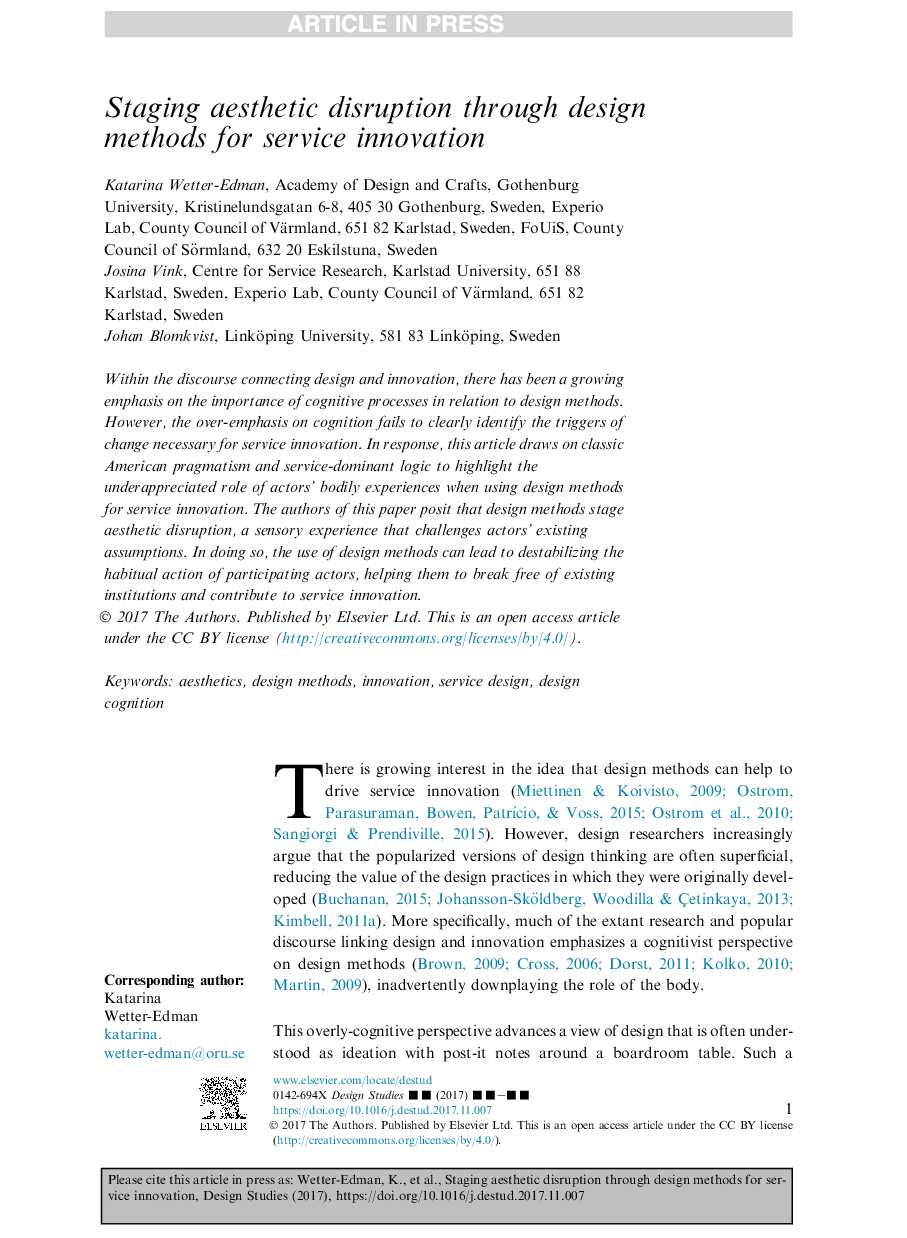| Article ID | Journal | Published Year | Pages | File Type |
|---|---|---|---|---|
| 6726499 | Design Studies | 2018 | 22 Pages |
Abstract
Within the discourse connecting design and innovation, there has been a growing emphasis on the importance of cognitive processes in relation to design methods. However, the over-emphasis on cognition fails to clearly identify the triggers of change necessary for service innovation. In response, this article draws on classic American pragmatism and service-dominant logic to highlight the underappreciated role of actors' bodily experiences when using design methods for service innovation. The authors of this paper posit that design methods stage aesthetic disruption, a sensory experience that challenges actors' existing assumptions. In doing so, the use of design methods can lead to destabilizing the habitual action of participating actors, helping them to break free of existing institutions and contribute to service innovation.
Related Topics
Physical Sciences and Engineering
Computer Science
Computer Graphics and Computer-Aided Design
Authors
Katarina Wetter-Edman, Josina Vink, Johan Blomkvist,
